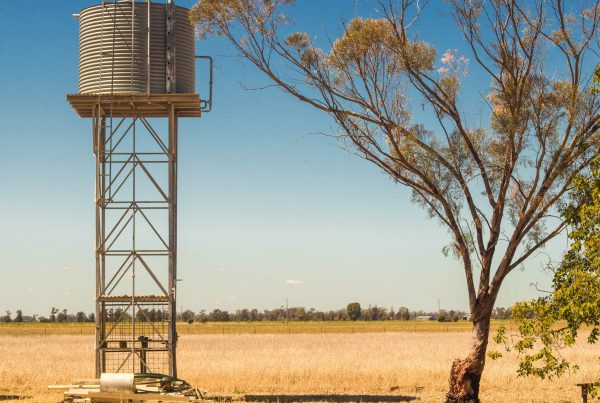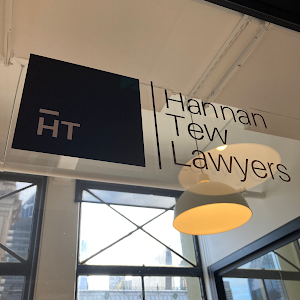The Skilled Work Regional Visa (Subclass 491) is a 5 year temporary visa to live, work, and study in a designated regional area – with a pathway to permanent residency.
The 491 allows the holder to live and work in a "designated regional area", with a pathway to permanent residency if certain residency/income criteria are satisfied. See if you qualify below.
Skilled Regional (Subclass 491) visa
The Subclass 491 visa is a points tested visa application, giving the holder a 5 year temporary visa with pathways to permanent residency.
Although anyone can submit an expression of interest (EOI) through SkillSelect, it is an invitation only application where you need to either (a) be sponsored by an eligible Australian relative or (b) be nominated by an Australian State/Territory. Each State/Territory have differing nomination criteria including their own occupation lists, and differing criteria such as job offers in their State/Territory, certain years of work experience, or certain levels of English.
For further information, see our 491 visa FAQs section or contact us directly.
Target Market
- This visa is aimed at attracting individuals with skills in demand by the relevant Australian State/Territories, to enable them to apply directly for permanent residency. Those visa applicants are expected to commit to remaining in the nominating State/Territory for at least two years from the grant of the visa.
Process
- ensure you have evidence of the points you claim and submit an expression of interest (EOI) through SkillSelect;
- if pursuing the State/Territory nominated pathway – apply for State/Territory nomination (this process varies from State/Territory to State/Territory);
- wait until you are invited to apply for the visa;
- submit a valid visa application within 60 days of your invitation; and
- wait for processing until visa grant.
General eligibility
- be invited to apply for this visas and either be:
- sponsored by an eligible relative that is usually resident in a designated regional area; or
- nominated by an Australian State/Territory;
- be under the age of 45;
- have a suitable skills assessment in an occupation on the relevant skilled occupation list;
- score a minimum of 65 points on a points test (though pragmatically the actual score required to receive an invitation is often much higher);
- demonstrate a “competent” level of English; and
- satisfy health and character requirements.
Eligibility
Skilled Regional (Subclass 491) visa
There are certain minimum eligibility requirements for the visa, most of which need to be met at the time you receive an invitation to apply for the visa. General eligibility requirements are set out on this page, and you should contact us or an immigration lawyer prior to making any decisions.
Skills assessment
- a skills assessment is a process undertaken by an authorised third party “skills assessing authority”, who will assess your qualifications and/or work experience to determine if your qualifications, skills and experience are suitable for migration to Australia;
- in the legislative instrument with the occupation lists, you can find the corresponding skills assessing authority for that occupation;
- common skills assessing bodies including Engineers Australia (for Engineering occupations), the Australian Computer Society (ACS) (for IT-related occupations), Trades Recognition Australia (TRA) (for trade occupations), and VETASSESS (for a lot of broader “white collar” occupations).
English
- to be eligible for the Subclass 190 visa, you must have a minimum level of competent English. Typically unless you have one of 5 passports, it means that you will need to sit an English test. If you obtain higher scores, you would be eligible for further points.
Points score
- you will need to have a minimum point score of at least 65 points to be eligible for this visa. Points are allocated based on favourable attributes such as age, English language ability, qualifications, years of work experience, study in Australia, partner English/qualifications, and others. You can see the points table on the Department’s website;
- the point score required to receive an invitation depends on the individual State/Territories, and certain point scores that would receive the nomination in one State/Territory may not in another.
State nomination
- the process to obtain the nomination of an Australian State/Territory then differs on the individual State/Territories. For example, some State/Territories require you to:
- make an application directly for their nomination;
- submit a Registration of Interest (ROI) first, where you then need to be invited to apply for their nomination; or
- simply require you to indicate in your EOI that you’re interested in the nomination of a particular State/Territory, and they would choose their own candidates (you cannot make a direct application for their nomination).
- typically to secure the nomination of an Australian State/Territory, you are expected to commit to remaining in their State/Territory for at least two years from the grant of the visa.
Sponsored eligible relative
- be at least 18 years old;
- be an Australian citizen, Australian permanent resident, or eligible New Zealand citizen;
- be usually resident in a designated regional area;
- be related to the applicant (or the applicant’s spouse/partner – if they are also an applicant for the visa) as:
- a parent;
- a child / step-child;
- a sibling (including adoptive or step siblings);
- an aunt/uncle ( (including adoptive or step aunt/uncles);
- a nephew/niece ( (including adoptive or step nephew/nieces);
- a grandparent; or
- a first cousin;
- agree to sponsor you and each member of the family unit who is also an applicant for the Subclass 491 visa;
- the eligible relative will need to provide a signed Sponsor Declaration form and appropriate evidence to show that they are 1) an Australian citizen/PR (or eligible NZ citizen) and 2) usually resident in a designated regional area.
Occupation
- To be eligible for the Subclass 491 visa, you need to nominate an occupation listed on the:
- Medium to Long Term Strategic Skills List (MLTSSL) – if pursuing the eligible relative sponsored pathway; or
- MLTSSL, Short Term Skilled Occupation List (STSOL), or Regional Occupation List (ROL) – if pursuing the State/Territory sponsored pathway;
- these occupation lists represents occupations with which they are recognised skill shortages in Australia. You will need to obtain a skills assessment in your nominated occupation (see below).
- you will need to obtain a skills assessment in your nominated occupation;
- it is worth noting that each State/Territory also often maintain their own list of occupations that they are willing to nominate. There may be some strategy regarding which occupation to pursue, depending on which State/Territory you are intending to seek the nomination of.
Invitation
- you cannot apply for the Subclass 491 visa immediately. To be considered, you would need to first submit an Expression of Interest (EOI) via SkillSelect. The process then differs depending on whether you are pursuing the sponsored relative route, or the State/Territory nomination route;
- for the sponsored relative route, the Department will conduct invitation rounds cyclically during the migration program year (1 July to 30 June). Currently the Department conduct invitation rounds quarterly (every 3 months);
- for the State/Territory nominated route, you will need to receive the nomination of an Australian State/Territory, the process for which differs depending on the State/Territory;
- irrespective of the route you take, if successful you receive an invitation via SkillSelect to then apply for the visa. From that point you will have 60 days to apply for the visa itself or your invitation will expire;
- see the “Process” tab for further information about the process.
Visa eligibility
- be invited to apply for this visa (and apply within 60 days of invitation);
- either be:
- sponsored by an eligible relative that is usually resident in a designated regional area; or
- nominated by an Australian State/Territory;
- be under the age of 45;
- have a suitable skills assessment in an occupation on the:
- Medium to Long Term Strategic Skills List (MLTSSL) – if pursuing the eligible relative sponsored pathway; or
- MLTSSL, Short Term Skilled Occupation List (STSOL), or Regional Occupation List (ROL) – if pursuing the State/Territory sponsored pathway;
- score a minimum of 65 points on a points test (though pragmatically the actual score required to receive an invitation is often much higher)
- demonstrate a “competent” level of English; and
- satisfy health and character requirements.
- all of the above criteria need to be met at the time of invitation, other than the health and character requirements.
Documents
Skilled Regional (Subclass 491) visa
The actual documents you require are dependent on your particular circumstances including (but not limited to) your family members, your health and character, your identity and your occupation. Your Hannan Tew advisor will provide you with a link to the Hannan Tew portal which will set out the specific documents required.
Identity
- Biographical pages of your current passports or travel documents
- Full quality passport sized photograph of yourself
Family relationships
- Passport bio data page for each family member
- Full quality passport sized photograph of each family member
- Birth certificate for each family member (translated)
- If in a:
- married relationship, a copy of your marriage certificate (translated);
- de facto relationship, evidence of at least 12 months of de facto relationship which address the assessing factors;
- If children are between 18 and 23, evidence of financial dependency;
- If including a child under 18 where a parent is not included, evidence of custody.
Occupation and skills
- evidence of a suitable skills assessment, at the time you are invited to apply for the visa
- evidence of your qualifications (if claiming points)
- evidence of your employment history (if claiming points), such as employment reference letters and evidence that it was paid (such as payslips or tax documents)
- evidence of other things that points are claimed for (i.e. NAATI accreditation, partner’s English + skills assessment, satisfying Australian study requirement)
- evidence of an Australian State/Territory nomination OR signed Sponsorship Declaration form if sponsored by eligible relative (and appropriate evidence)
- registration, licensing and professional membership certificate (as relevant)
English, health and character
- evidence you have a “competent” level of English, at the time you are invited to apply for the visa
- an overseas police certificate from every country, including your home country, where you spent a total of 12 months or more in the last 10 years since you turned 16
- health assessments
Process
Skilled Regional (Subclass 491) visa
Unlike many visas to Australia, you cannot apply for the Subclass 190 visa directly. There is a particular process which must be followed, including applying for an expression of interest (EOI) and subsequently being invited to apply for the visa. There are certain nuances around the process including submission of the EOI, how often invitations are conducted, timing to apply for the visa, and others which are outlined further on the right side of this page.
Gathering the documents
To ensure that you have the correct points score, and are ready to lodge your visa application as soon as possible after receiving an invitation, we strongly recommend collating all the documents for your Subclass 491 visa before submitting the expression of interest (EOI).
This ensures that you are able to sufficiently evidence everything that you’ve claimed points for, and the subsequent visa application process goes as smoothly as possible.
Submitting an EOI
Once you’ve correctly calculated your points to satisfaction, you will need to submit an Expression of Interest (EOI) for the Subclass 491 visa via SkillSelect. The EOI effectively will have your details including name, point score, and date of submission.
Once you’ve submitted an EOI, it remains in the Department’s system for up to two years. You can update your EOI as appropriate, otherwise it will also automatically update your points in certain circumstances (for example, if you move into a different age bracket, or your years of work experience increases).
Sponsorable eligible relative
For those pursuing the sponsored eligible relative route, the Department will conduct invitation rounds cyclically during the migration program year (1 July to 30 June). Currently the Department conduct invitation rounds quarterly (every 3 months).
If selected, you will receive an invitation through SkillSelect to then apply for the visa. You should also receive an email notifying you of this. This invitation is valid for 60 days, and you will need to apply for the Subclass 491 visa before then.
State nomination / invitation
Depending on the process for the particular State/Territory you are interested in receiving the nomination from, after you’ve submitted your EOI you should follow the appropriate procedure to secure State/Territory nomination.
That may be as simple as indication in your EOI that you’re interested in a particular State/Territories nomination, or it may involve making an application to the State/Territory in question. Please double check the criteria for each State/Territory that you are interested in pursuing the nomination from.
Upon the State/Territory agreeing to nominate you, you will receive an invitation through SkillSelect to then apply for the visa. You should also receive an email notifying you of this. This invitation is valid for 60 days, and you will need to apply for the Subclass 190 visa before then.
Applying for the visa
After receiving an invitation, the next step is to apply for the 491 visa application online via ImmiAccount, a portal managed by the Department. You will need to:
- Log-in or create an ImmiAccount on the Department’s website
- Complete the visa application form
- Attach relevant documents
- Pay the visa application charges and lodge the application.
Ensure that all family members accompanying the main visa applicant are also added to your visa application.
After application
The Department will send an acknowledgement letter once your application has been received.
The standard processing times for the 491 visa (as at April 2025) for each pathway are as follows:
Family Sponsored Regional
- 50% are processed in 22 months; and
- 90% are processed in 24 months.
State/Territory Government Nominated Regional
- 50% are processed in 20 months; and
- 90% are processed in 22 months.
This is subject to change, and the current processing times published by the Department.
No updates on the application will be provided during the standard processing time. If more information is required, this will be requested via email. You can read more about what to expect after your visa is lodged at our blog.
Do not travel to Australia until the outcome of your visa application is received and you have been granted the visa (or you otherwise obtain another visa).
Be sure to advise the Department if there are any mistakes on your application, or if your personal circumstances change after you have applied.
Visa outcome
The Department will advise you of the outcome of your Skilled Work Regional (Subclass 491) visa application in writing.
If your visa application is successful, you will be provided a PDF grant letter, which advises of:
- your visa grant number
- the date your visa starts and ends
- applicable visa conditions.
This visa is electronically linked to your passport, so you would not need a visa label or to attend any Embassy/Consulates. Retain an electronic copy of this grant letter for when you arrive, and whilst you live in Australia.
If you are refused a visa, you will be advised in writing:
- the reason(s) for the unsuccessful application and
- whether you have a right to review the decision
It is vital that you read and understand the refusal notification clearly to understand the timeframe and means of appeal. You can find more information about the appeal process at our Visa Refusals and Review page.
491 visas
Frequently Asked Questions
Does the Subclass 491 visa confer permanent residency?
How does the Subclass 491 visa transition to permanent residence?
- hold the Subclass 491 visa for at least three years;
- have complied substantially with the conditions that apply to your Subclass 491 visa (and any subsequent bridging visas); and
- provide copies of notices of assessment in relation to three income years.
Do I need to be working in my nominated occupation before applying?
Do different occupations get invited on different point scores?
Do I need to tell my employer that I'm applying for this visa / Do they get notified that I'm applying or have applied?
How long will this process take?
- for the sponsored eligible relative route – the Department’s invitation rounds. Things such as how many EOI applicants there are, your point score, other candidates point scores, the number of invites issued, all affect the timing;
- for the State/Territory nominated route – things such as the State/Territories annual allocation, State/Territory priorities for the year, how many EOI applicants there are, your point score, and other candidates point scores, all affect the timing.
Once you receive the invitation however and apply for the visa, the processing times for the 491 visa itself are published on the Department’s website.
Do I need to live in my nominating State/Territory?
This is not a condition of your visa – rather that you must simply reside in a part of Australia that was a “designated regional area” at the time of visa grant.
Does submitting an EOI give me a Bridging Visa?
As the holder of a Subclass 491 visa, can I apply for a further visa?
How long is my skills assessment / English test valid for?
Can I include my family in my Subclass 491 visa?
Yes, you can include anybody who is a “Member of the Family Unit”, which generally includes your spouse/de facto partner, and certain children in your visa application.
There are specific requirements for children over the age of 18 to demonstrate dependency. Children 23 years or above cannot be included except in very limited circumstances.
You cannot include parents or siblings in your visa application, even if they are dependent on you.
I have a dependent partner, can they work?
Yes, if granted, you and your partner will be permanent residents and have full work authorisation in Australia. This means they can work for any employer in any capacity.
Can my children study?
Yes. However, different States/Territories in Australia have different requirements and fees may be applicable. We strongly recommend that you explore this with the education provider directly.
Should I just book my health examinations and obtain police clearances?
The Department have appointed particular panel doctors who are authorised to conduct health examinations for Australian visa purposes.
If the health examinations are not carried out by these individuals, they will need to be redone.
The Department also require specific police clearances.
Please wait for instructions from your HT advisor to ensure that you don’t unnecessarily incur any costs or loss of time.
Do I need to work in my nominated occupation after visa grant?
Do I have any conditions once I've obtained my 491 visa?
The Subclass 491 visa is granted subject to several conditions, including that the holder:
- must notify the Department within 14 days of a change to their employer’s address / employment location, contact details (address, phone, email etc.) or passport number;
- must continue to live/work/study in a part of Australia that was a “designated regional area” at time of visa grant;
- if requested, provide evidence of their residential or employment address within 28 days; and
- if requested, attend an interview.
Disclaimer
The information contained here is offered for informational purposes only and does not constitute legal advice or give rise to an attorney-client relationship between you and our firm. The information: (i) must be regarded as a practical guide for general information and not a process guide for determining the specific immigration requirements of the countries covered, (ii) should not be a substitute for a more indepth analysis of applicable facts and circumstances conducted by competent professionals, and (iii) does not represent an opinion from Hannan Tew or any of its agents with regard to the laws of any of the jurisdictions concerned. The information does not guarantee the outcome or approval of any particular immigration application.
What can we do for you?
With extensive experience representing applicants apply for general skilled migration visas from all corners of the world, our staff are well placed to assist with all issues in relation to the general skilled migration program including: skills assessment applications, State / territory nomination applications, visa applications and general advisory.
The latest Subclass 491 visa
blogs, written regularly

Skilled Work Regional (Subclass 491) Document Checklist

What are the English Language requirements for an Australian visa (in plain English)? (Updated on: 8 August 2025)

Skilled Nominated (Subclass 190) Visa Document Checklist


